For the past four weeks, Venezuelans have taken to the streets to protest high crime, inflation, low employment opportunities, goods shortages, and the suppression of free speech. The culprit: Nicolás Maduro, the current President of Venezuela. Maduro replaced former President Hugo Chávez after his 14 year rule ended in March 2013, when Chávez died of cancer. The protests received international attention after a few protesters were killed on February 12th by unknown armed vigilantes. Another landmark event involved the February 18th arrest of Leopoldo Lopez, an opposition leader politician who was accused of sedition, terrorism, and murder for his role in organizing the initial protests. This event sparked greater participation in Caracas demonstrations and a few more violent nighttime riots by a fringe minority. The protests continue as Lopez encourages his fellow Venezuelans from prison.
***
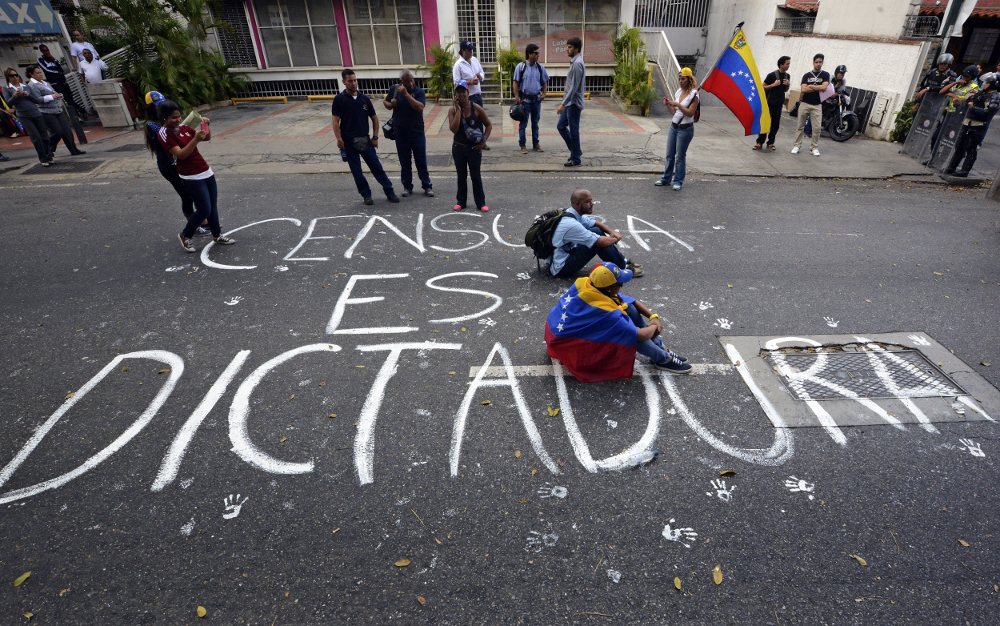
The slogan, “censorship is dictatorship,” describes one of the protesters’ many grievances. Students and other demonstrators took to the streets against current Venezuelan President Nicolás Maduro. Image via AOL.com.
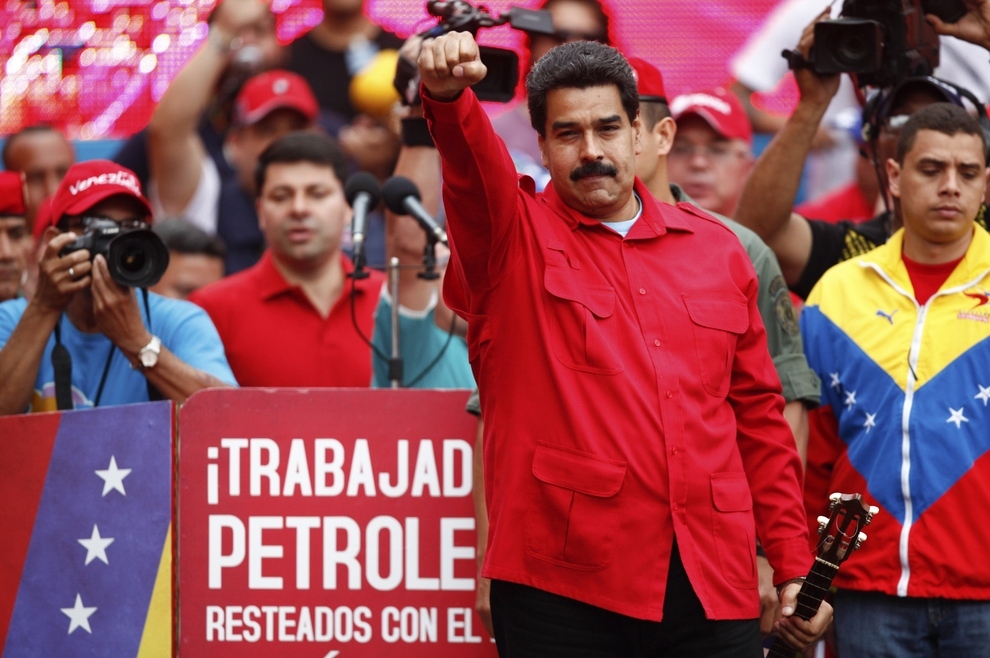
Maduro holds a rally in Caracas, Venezuela. Protesters blame President Maduro for Venezuela’s current state of affairs; however, Maduro and his top officials blame the opposition for the country’s economic and security problems. Maduro served under Hugo Chávez as Minister of Foreign Affairs from 2006 to 2013. Before his political career formally began in 2000, Maduro was a bus driver and a trade union leader. Image via Reuters.
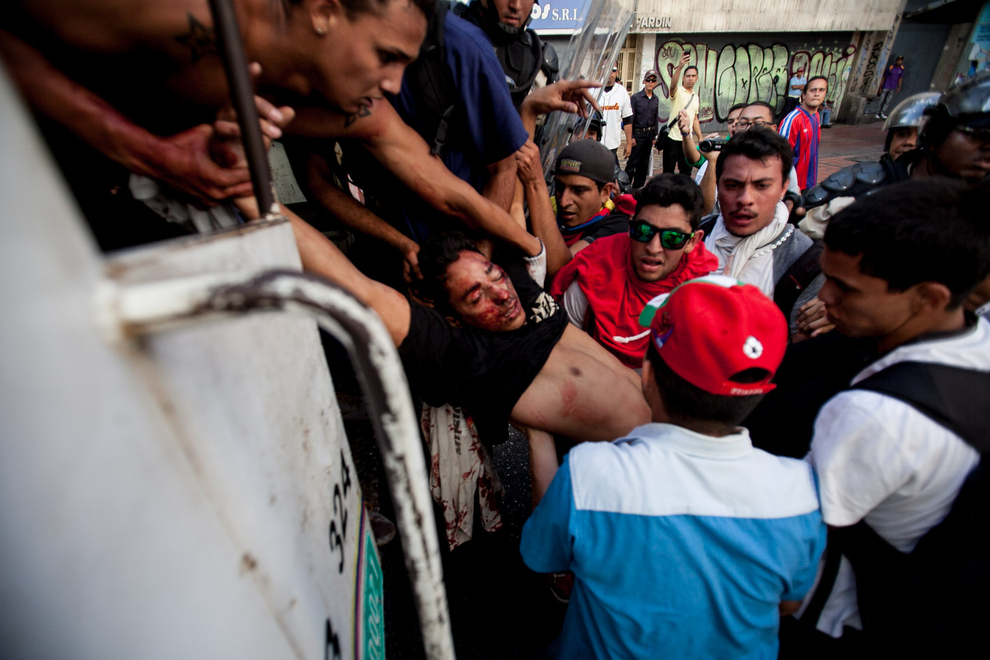
Nationwide protests organized by Venezuela’s opposition party Voluntad Popular (centrist) began earlier in February. After three people were killed on February 12th, the protests received international coverage. According to sources, armed vigilantes on motorcycles attacked anti-government protesters by firing into crowds. Among the deceased included student demonstrator Bassil Da Costa, pictured here, who was shot in the head. President Maduro blamed the incident on “fascist forces” who allegedly are conspiring to overthrow him. Image via Associated Press.

On February 18th, the protests reached new landmarks, including the arrest of Leopoldo Lopez, the 42-year-old, Harvard-educated economist-turned-politician. Lopez, an outspoken critic of Chávez and Maduro, leads the Voluntad Popular opposition party and had a hand in organizing the current protests. In this photo, Lopez addresses a crowd one last time after turning himself in to police; Lopez remains in military prison, charged with sedition, terrorism, and murder for instigating violence during protests. Before his arrest, Lopez delivered a speech atop a statue of Cuban independence hero Jose Marti: “If my jailing serves to awaken a people, serves to awaken Venezuela...then it will be well worth the infamous imprisonment imposed upon me directly, with cowardice.” Image via Reuters, by Jorge Silva.
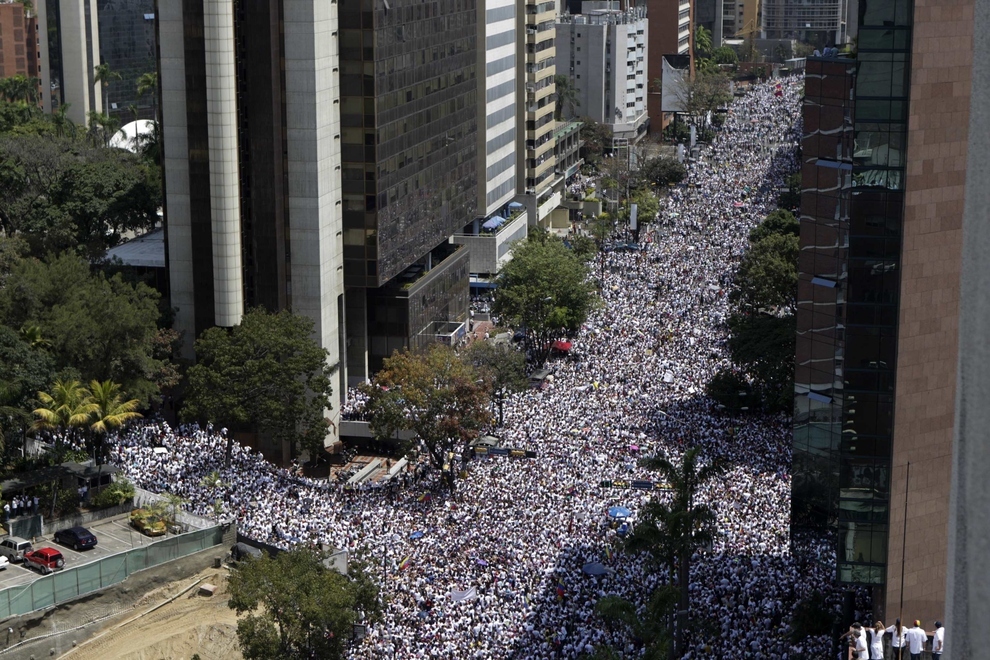
In the midst of Lopez’s arrest, thousands of Venezuelans flooded the streets of Caracas to protest the government under Maduro’s administration. Image via Reuters, by Christian Veron.
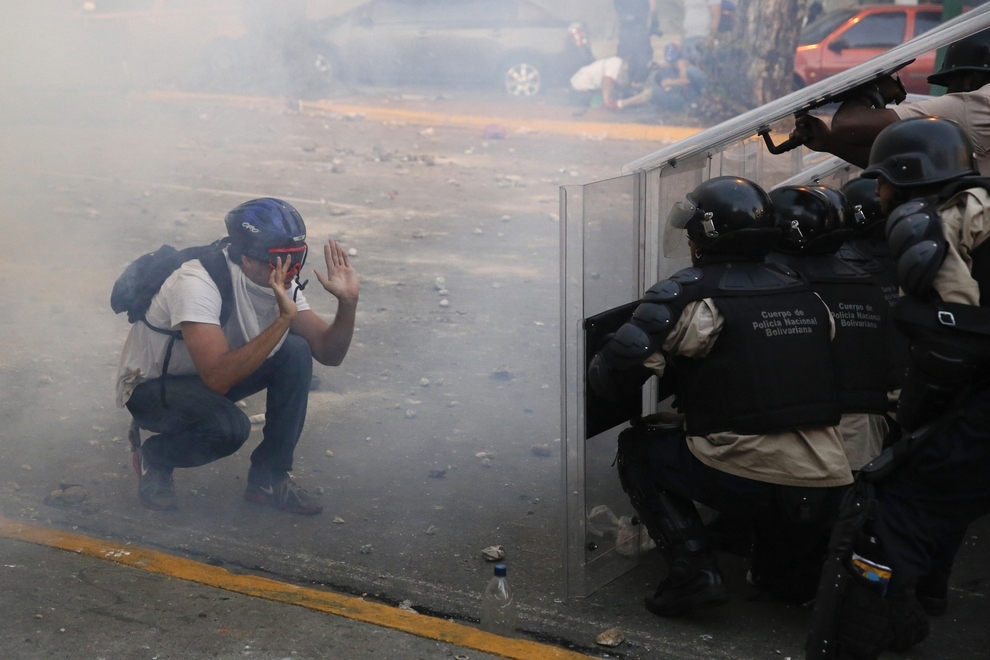
Many of the demonstrators are Venezuelan students. A common practice by protesters has been the raising of both hands to show non-violent intent to riot police. Image via Reuters, by Carlos Garcia Rawlins.
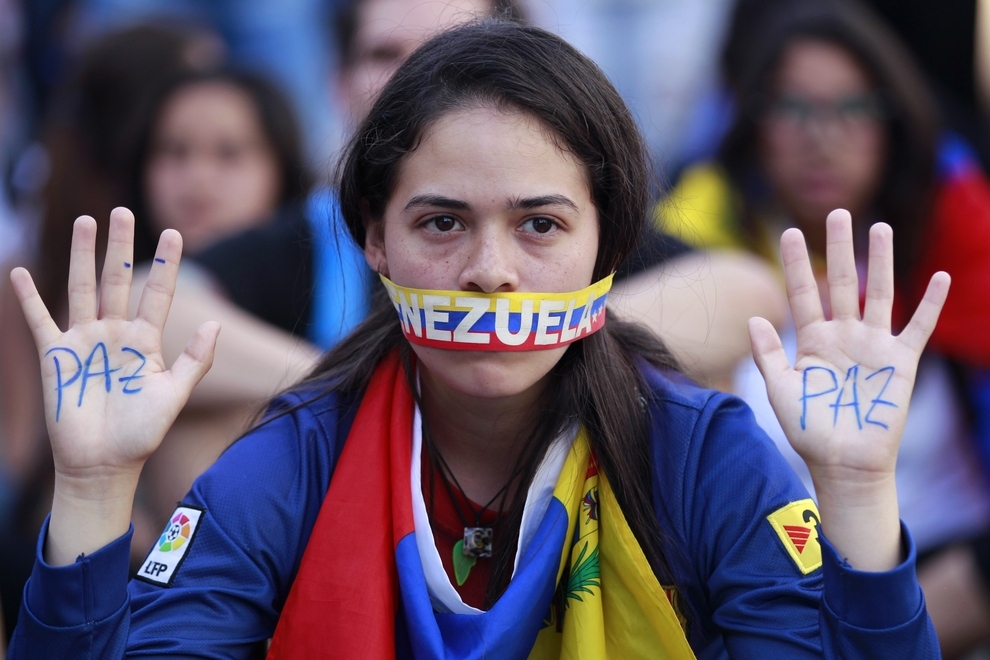
Students have painted the word paz, meaning “peace”, on their hands. This young woman wears the Venezuelan flag and a colored band over her mouth as a means of symbolic expression and peaceful protest. Image via Reuters, by Jorge Silva.
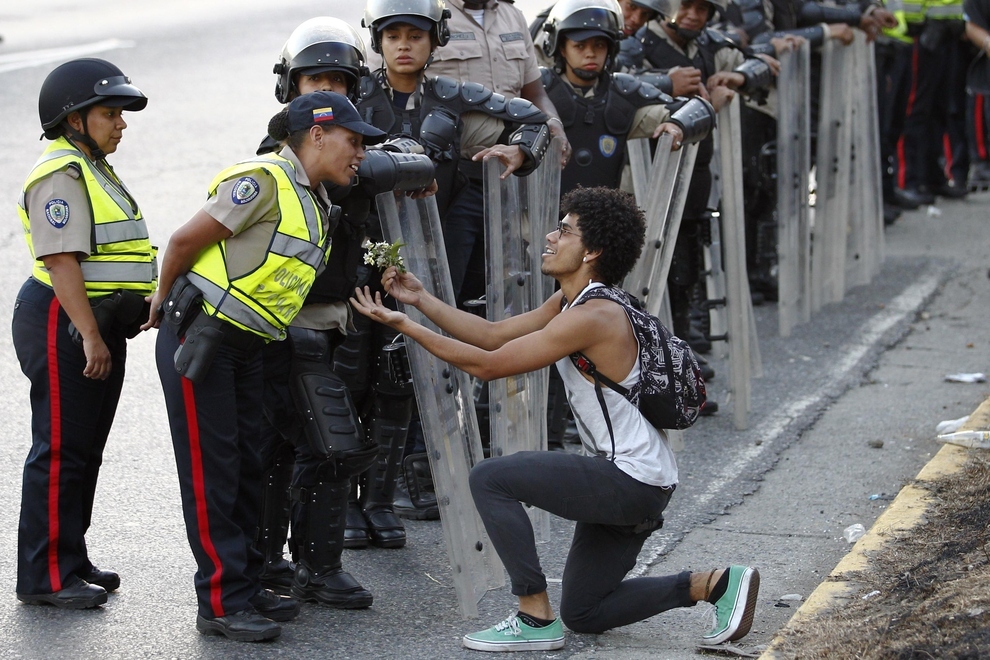
The vast majority of demonstrators have been peaceful. Earlier last week, students organized a march, urging Venezuelans to “respond to the violence with white flowers.” Image via Reuters, by Carlos Garcia Rawlins.
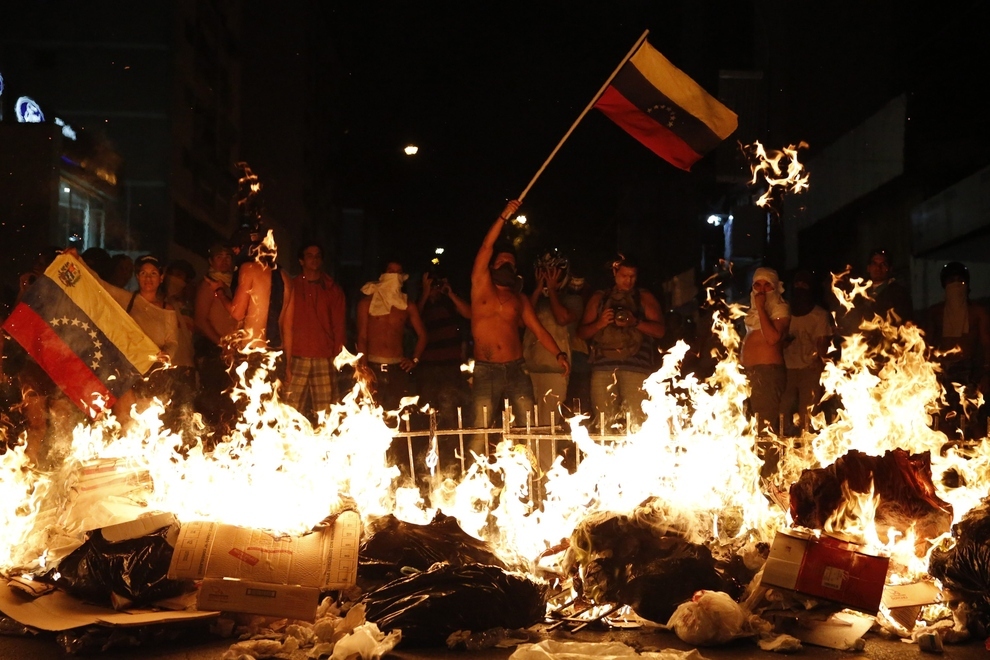
However, by night, an increasingly prominent radical fringe has been attacking police, blocking roads, vandalizing buildings, and setting fires. Protesters, pictured here, wave Venezuelan flags against the Maduro administration while burning street debris left from earlier protests. Image via Reuters, by Carlos Garcia Rawlins.
Local TV channels provide almost no coverage of the protests. Like the Arab Spring protests in 2011, social media has become the de facto means of exchanging information and images. News outlets like CNN have organized platforms to share images, videos, and stories related to the protests in Venezuela. In response, President Maduro expelled CNN reporters from the country. The usual suspects including Twitter, Facebook, Instagram, and YouTube allow protestors to gain access to information and provide a medium for sharing videos and photos. About 14 million Venezuelans (out of 30 million) have smart phones, which makes social media a vital part of the story. Image via AP Photo, by Alejandro Cegarra.
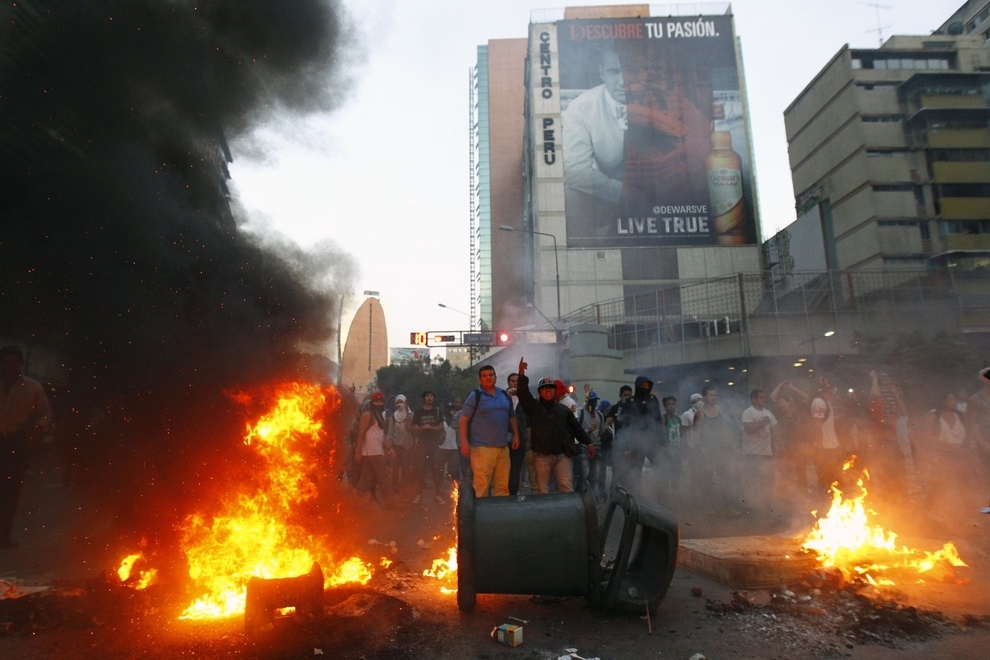
President Maduro has labeled opposition groups “fascists” and has compared them to an “infection” that must be cured. In light of the radical fringe’s actions (vandalism, fires, attacks on police), Maduro has met riots with a strong police force—including pressurized water cannons, tear gas grenades, riot gear, etc. Image via Reuters.
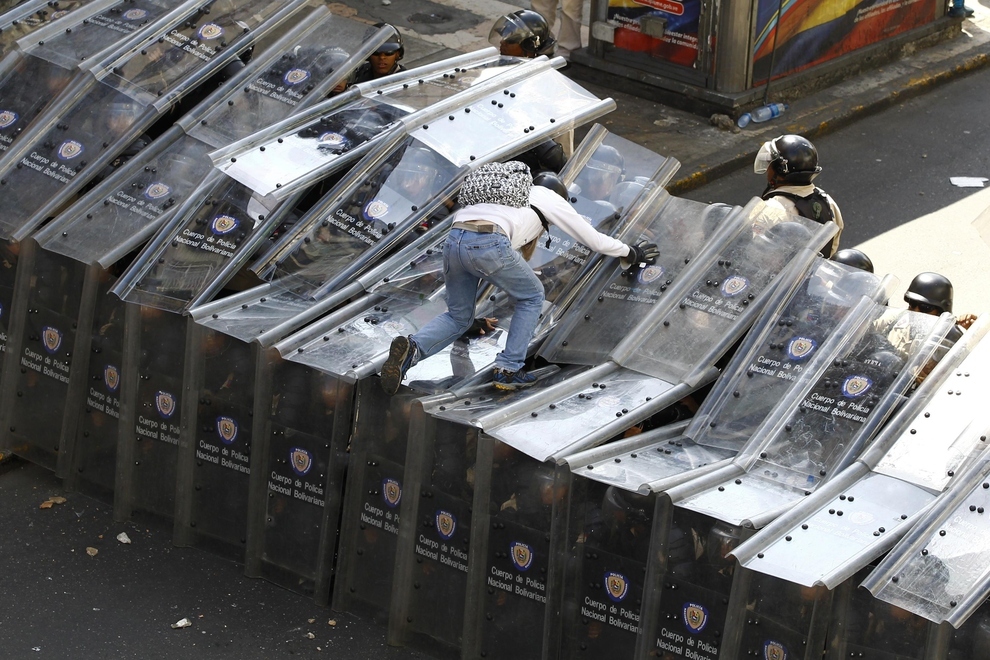
The Maduro administration recently has accused the United States of plotting to destabilize the Venezuelan government and gave U.S. diplomats 48 hours to leave the country. U.S. President Barack Obama responded: “Venezuela, rather than trying to distract from its own failings by making up false accusations against [U.S.] diplomats...ought to focus on addressing the legitimate grievances of the Venezuelan people.” Image via Reuters, by Carlos Garcia Rawlins.
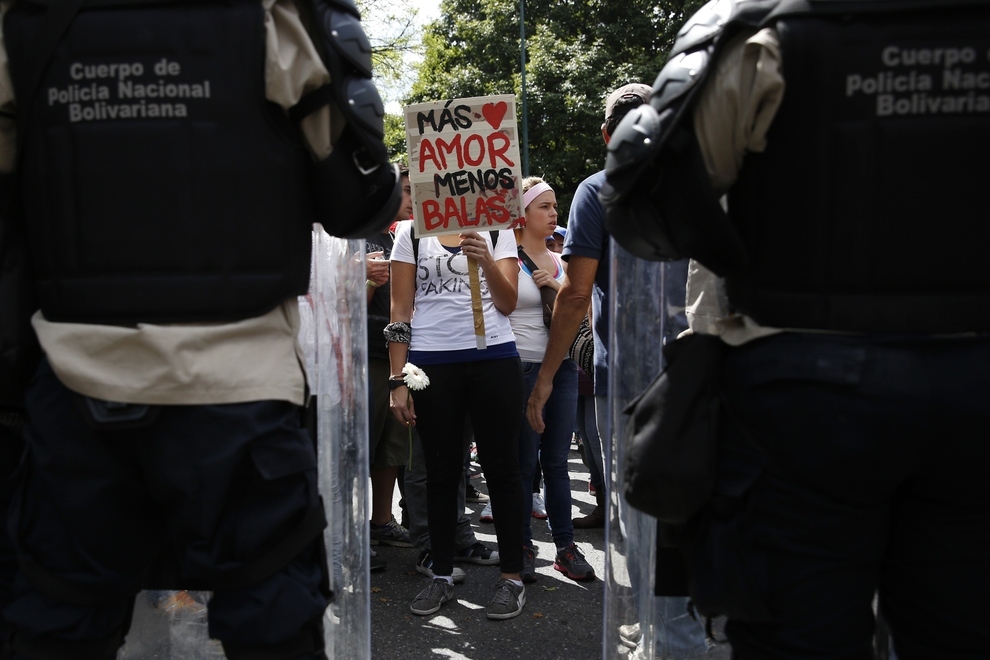
As of printing, 18 protesters had been killed. The majority of these deaths resulted from major bullet wounds, some to the head. Image via Getty Images, by Leo Ramirez/AFP.
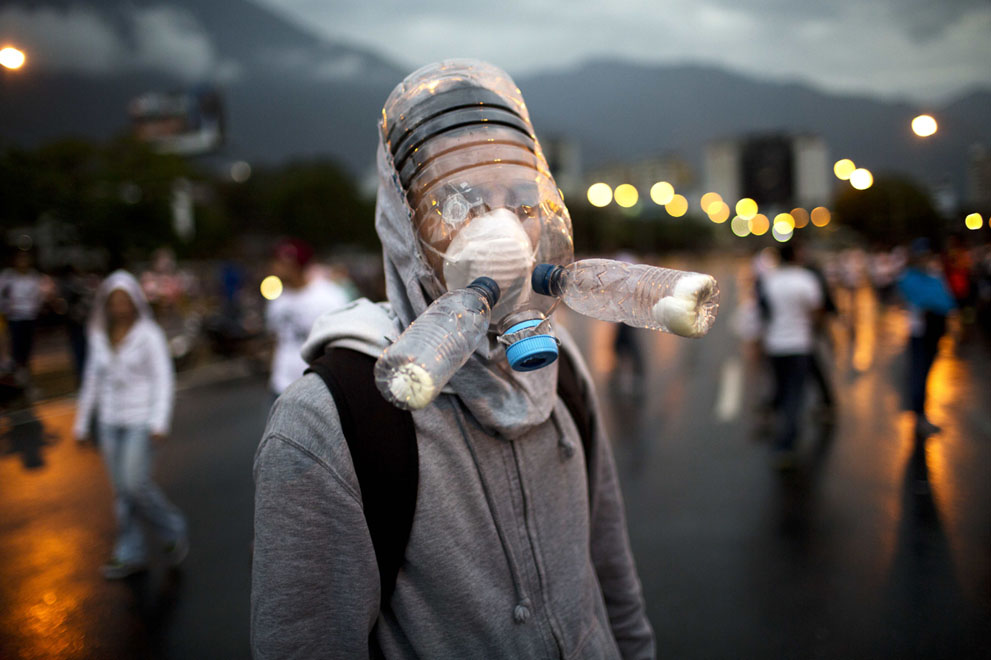
Venezuela has a history of protests and counter-protests. President Maduro’s claims about U.S. involvement and sabotage allude to the 2002 coup where President Hugo Chávez was briefly ousted. Chávez accused the United States of intervening in Venezuela’s internal affairs and of formulating assassination plots. After Chávez died in March 2013, Maduro assumed the presidency after he was appointed Vice President in October 2012. Maduro won the April 2013 presidential election, defeating opposition candidate Henrique Capriles with a 1.5 percent margin. Image via AP, by Rodrigo Abd.
Top image via Reuters, by Jorge Silva.


a global affairs media network
In Photos: Venezuela's Protests

March 3, 2014
For the past four weeks, Venezuelans have taken to the streets to protest high crime, inflation, low employment opportunities, goods shortages, and the suppression of free speech. The culprit: Nicolás Maduro, the current President of Venezuela. Maduro replaced former President Hugo Chávez after his 14 year rule ended in March 2013, when Chávez died of cancer. The protests received international attention after a few protesters were killed on February 12th by unknown armed vigilantes. Another landmark event involved the February 18th arrest of Leopoldo Lopez, an opposition leader politician who was accused of sedition, terrorism, and murder for his role in organizing the initial protests. This event sparked greater participation in Caracas demonstrations and a few more violent nighttime riots by a fringe minority. The protests continue as Lopez encourages his fellow Venezuelans from prison.
***

The slogan, “censorship is dictatorship,” describes one of the protesters’ many grievances. Students and other demonstrators took to the streets against current Venezuelan President Nicolás Maduro. Image via AOL.com.

Maduro holds a rally in Caracas, Venezuela. Protesters blame President Maduro for Venezuela’s current state of affairs; however, Maduro and his top officials blame the opposition for the country’s economic and security problems. Maduro served under Hugo Chávez as Minister of Foreign Affairs from 2006 to 2013. Before his political career formally began in 2000, Maduro was a bus driver and a trade union leader. Image via Reuters.

Nationwide protests organized by Venezuela’s opposition party Voluntad Popular (centrist) began earlier in February. After three people were killed on February 12th, the protests received international coverage. According to sources, armed vigilantes on motorcycles attacked anti-government protesters by firing into crowds. Among the deceased included student demonstrator Bassil Da Costa, pictured here, who was shot in the head. President Maduro blamed the incident on “fascist forces” who allegedly are conspiring to overthrow him. Image via Associated Press.

On February 18th, the protests reached new landmarks, including the arrest of Leopoldo Lopez, the 42-year-old, Harvard-educated economist-turned-politician. Lopez, an outspoken critic of Chávez and Maduro, leads the Voluntad Popular opposition party and had a hand in organizing the current protests. In this photo, Lopez addresses a crowd one last time after turning himself in to police; Lopez remains in military prison, charged with sedition, terrorism, and murder for instigating violence during protests. Before his arrest, Lopez delivered a speech atop a statue of Cuban independence hero Jose Marti: “If my jailing serves to awaken a people, serves to awaken Venezuela...then it will be well worth the infamous imprisonment imposed upon me directly, with cowardice.” Image via Reuters, by Jorge Silva.

In the midst of Lopez’s arrest, thousands of Venezuelans flooded the streets of Caracas to protest the government under Maduro’s administration. Image via Reuters, by Christian Veron.

Many of the demonstrators are Venezuelan students. A common practice by protesters has been the raising of both hands to show non-violent intent to riot police. Image via Reuters, by Carlos Garcia Rawlins.

Students have painted the word paz, meaning “peace”, on their hands. This young woman wears the Venezuelan flag and a colored band over her mouth as a means of symbolic expression and peaceful protest. Image via Reuters, by Jorge Silva.

The vast majority of demonstrators have been peaceful. Earlier last week, students organized a march, urging Venezuelans to “respond to the violence with white flowers.” Image via Reuters, by Carlos Garcia Rawlins.

However, by night, an increasingly prominent radical fringe has been attacking police, blocking roads, vandalizing buildings, and setting fires. Protesters, pictured here, wave Venezuelan flags against the Maduro administration while burning street debris left from earlier protests. Image via Reuters, by Carlos Garcia Rawlins.
Local TV channels provide almost no coverage of the protests. Like the Arab Spring protests in 2011, social media has become the de facto means of exchanging information and images. News outlets like CNN have organized platforms to share images, videos, and stories related to the protests in Venezuela. In response, President Maduro expelled CNN reporters from the country. The usual suspects including Twitter, Facebook, Instagram, and YouTube allow protestors to gain access to information and provide a medium for sharing videos and photos. About 14 million Venezuelans (out of 30 million) have smart phones, which makes social media a vital part of the story. Image via AP Photo, by Alejandro Cegarra.

President Maduro has labeled opposition groups “fascists” and has compared them to an “infection” that must be cured. In light of the radical fringe’s actions (vandalism, fires, attacks on police), Maduro has met riots with a strong police force—including pressurized water cannons, tear gas grenades, riot gear, etc. Image via Reuters.

The Maduro administration recently has accused the United States of plotting to destabilize the Venezuelan government and gave U.S. diplomats 48 hours to leave the country. U.S. President Barack Obama responded: “Venezuela, rather than trying to distract from its own failings by making up false accusations against [U.S.] diplomats...ought to focus on addressing the legitimate grievances of the Venezuelan people.” Image via Reuters, by Carlos Garcia Rawlins.

As of printing, 18 protesters had been killed. The majority of these deaths resulted from major bullet wounds, some to the head. Image via Getty Images, by Leo Ramirez/AFP.

Venezuela has a history of protests and counter-protests. President Maduro’s claims about U.S. involvement and sabotage allude to the 2002 coup where President Hugo Chávez was briefly ousted. Chávez accused the United States of intervening in Venezuela’s internal affairs and of formulating assassination plots. After Chávez died in March 2013, Maduro assumed the presidency after he was appointed Vice President in October 2012. Maduro won the April 2013 presidential election, defeating opposition candidate Henrique Capriles with a 1.5 percent margin. Image via AP, by Rodrigo Abd.
Top image via Reuters, by Jorge Silva.


